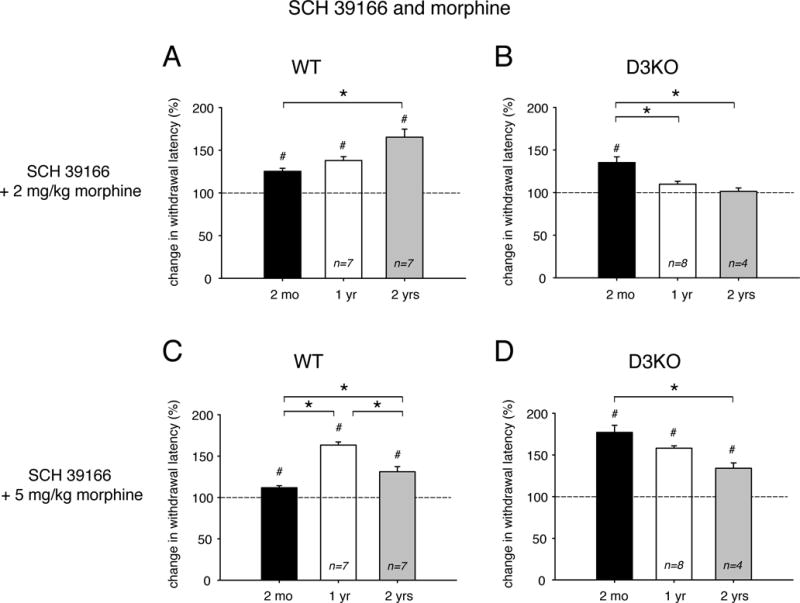Figure 4.

Effects of combinatory treatments of the dopamine D1R antagonist, SCH 39166, and low (2 mg/kg) or high (5 mg/kg) morphine on thermal pain withdrawal latencies in differently aged WT and D3KO. Displayed data represent changes in withdrawal latency compared to respective control vehicle injections, with dashed lines representing relative vehicle control levels. A. WT animals, SCH 39166 + low morphine. The combination of SCH 39166 and low morphine was effective across all ages in significantly increasing withdrawal latencies over the respective controls, and the increase at 2 years of age was significantly enhanced over the data at 2 months. B. D3KO animals, SCH 39166 + low morphine. In D3KO, the combination of SCH 39166 and low morphine was effective only at 2 months, but not at 1 year or 2 years. The increase at 2 months of age was significantly enhanced over the data at both 1 year and 2 years. C. WT animals, SCH 39166 + high morphine. Similar to the combination of SCH 39166 and low morphine, SCH 39166 + high morphine was effective across all ages in significantly increasing withdrawal latencies over the respective controls. Further, the increase at 1 year was significantly enhanced over that at 2 years, which in turn was larger than that at 2 months. D. D3KO animals, SCH 39166 + high morphine. In D3KO, the combination of SCH 39166 and high morphine was effective across all ages in significantly increasing withdrawal latencies over the respective controls, and there was a significant difference between 2 months, 1 year, and 2 years. Abbreviations as in Figure 1. *: denotes significant difference between groups; #: denotes significant difference from vehicle control (dashed line).
